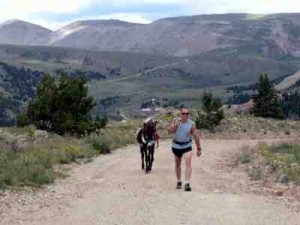Brief by Central Staff
Forests – January 2006 – Colorado Central Magazine
The good news is that there could be a lot of piñon available for firewood in the near future, since there are a lot of dead trees. The bad news is that there may not be many piñon trees and their tasty piñon nuts in the long term, on account of the heat that came with the most recent drought.
Piñon is excellent firewood with pleasant tangy smoke. A dry cord, on average, offers 18.7 million BTUs. Gamble oak, often known locally as scrub oak, is a little better, at 21.2 million, but most wood around here offers less heat per cord: Douglas fir, 15.3 million; ponderosa, 14.1 million; aspen, 12.6 million; Englemann spruce 10.9 million.
(BTU stands for British Thermal Unit, and is the amount of heat required to raise one pound of water 1°F. Modern metric types prefer the calorie, the amount of heat needed to raise one gram of water by 1°C. We like the old standard units; indeed, we still measure in picas and points when laying out the magazine.)
Now for the bad news. Piñon trees in the American Southwest have survived worse droughts than the most recent one. But the drought that culminated in 2002 was hotter by about 3°F than a drier drought in the 1950s that did not result in widespread piñon loss.
The culprit isn’t the hot and dry weather, in and of itself, but a beetle known to science as Ips confusus. It burrows through piñon bark, mates, and lays eggs. A healthy piñon produces plenty of sap, enough to trap and suffocate the beetles. A stressed tree doesn’t, and so the insects’ eggs hatch and the larvae eat the phloem — the layer under the bark which transmits nutrients from the root system. The tree dies.
That’s been happening in a big swath that starts in Central Colorado and spreads southwest into central Arizona, with about 60,000 square miles affected, according to Neil Cobb, an ecologist at Northern Arizona University in Flagstaff. “I don’t want to sound too melodramatic,” he said, “but we’re talking about the loss of an entire ecosystem.”
David Breshears, an ecologist at the University of Arizona in Tuscon, said that even if there are no hot droughts in the future, it will be a long time before the piñon stands recover, since they grow so slowly. “Whatever you care about — nuts, animals, using piñon for fuel wood, grazing — it’s going to be impacted for decades at best.”

